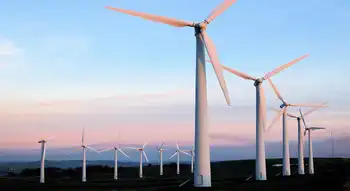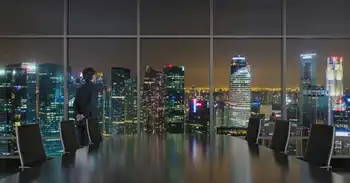Kansas could be exporter of renewable energy
By The Hutchinson News
CSA Z463 Electrical Maintenance -
Our customized live online or in‑person group training can be delivered to your staff at your location.

- Live Online
- 6 hours Instructor-led
- Group Training Available
The report was presented during a webcast by then-Lt. Gov. Mark Parkinson, who was sworn in as governor to succeed Kathleen Sebelius, and members of the American Council on Renewable Energy. The study was by the Joint Coordinated System, a group of regional transmission operators including the Southern Power Pool, which Kansas is a part.
The study calculated the state's maximum wind potential at 19 gigawatts by 2030 and projected 1 megawatt of power annually each from solar and bio-energy.
The study found tremendous potential to market Kansas energy to places such as Illinois, Indiana, Louisiana and Georgia.
"How we see the current situation in Kansas is there is sufficient capacity to meet energy needs in the medium term for the Southwest Power Pool and Kansas," said Rob Church, vice president of industry research and analysis with the council. "You don't have a need for additional capacity through 2018, so there's time to think this through, to plan and make good decisions."
Church said the plan could create $23 billion in cumulative economic impact and 12,000 jobs from now through 2030.
But with current market conditions and a lack of transmission capability, energy from wind and other renewable resources is more expensive to generate.
"It's clear it will have to be sold out of state to get to 20,000" kilowatts, Parkinson said. "To occur, we need transmission to move east, where most users are."
Parkinson said if the price of wind generation doesn't fall, then companies will need incentives to buy it.
"The easiest way is for Congress to make wind cheaper by placing a price on carbon or by forcing other states to buy Kansas wind through adoption of a national renewable energy standard," he said.
Church said the study's prediction would require nonstop utility construction in Kansas for the next 20 years to meet the goal.
The study found that the economic impact could be $400 million per year by 2018 and $800 million to $900 million annually from 2020 to 2030.
The projected 1 megawatt each of solar and bio-energy power would add an additional $350 million per year in direct, indirect and induced impact.
Church said most of the bio-energy growth would be from the conversion of smaller coal plants to burning biomass, such as agricultural waste and switchgrass.
Parkinson said the state has been slow in wind development because an agreement not to build in the Flint Hills led to an impression within the industry that Kansas was "anti-wind."
He also said there is a lack of net metering, which allows small power producers to sell generated power back to large utilities and "no progressive legislation" rewarding development.











